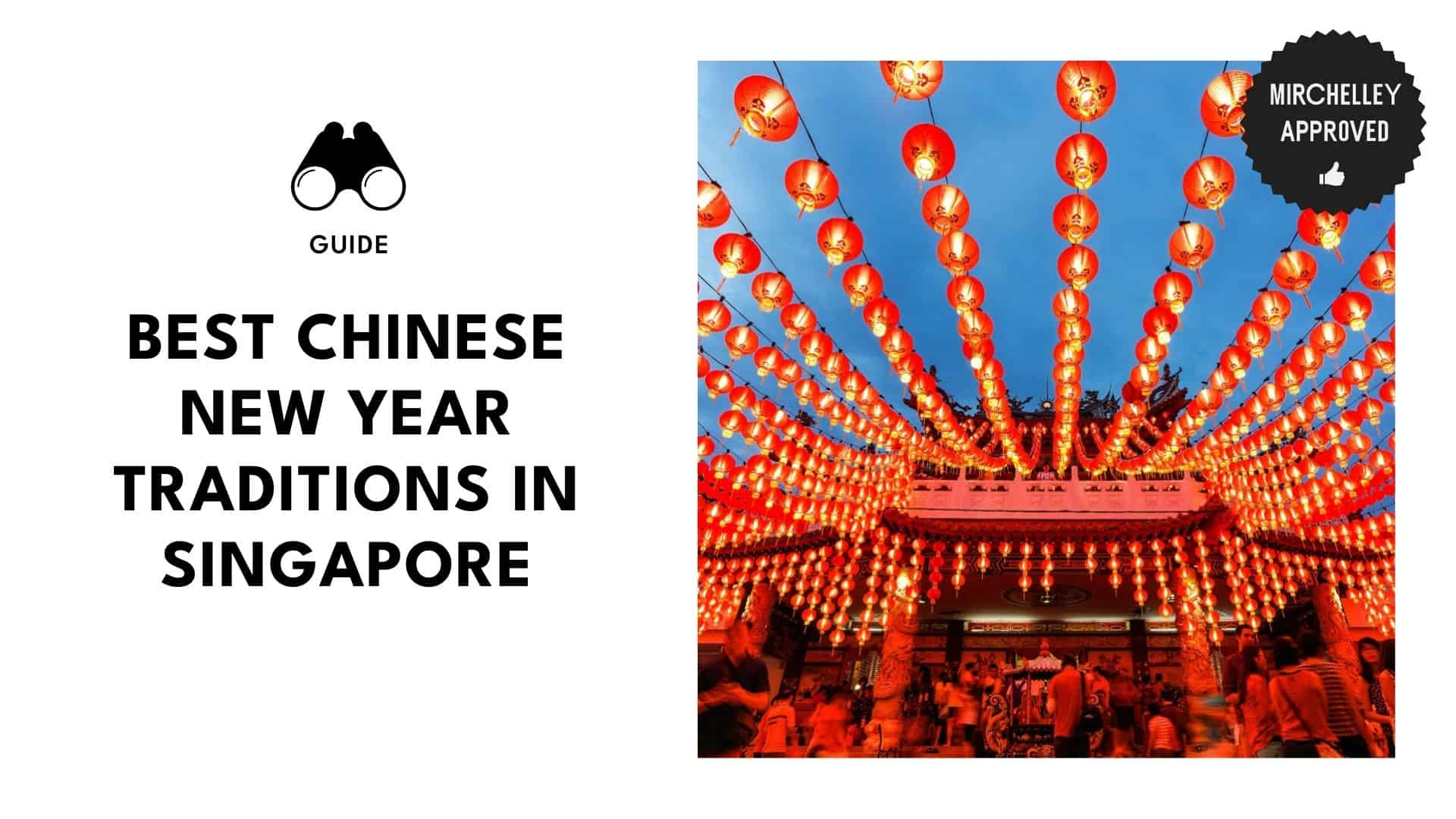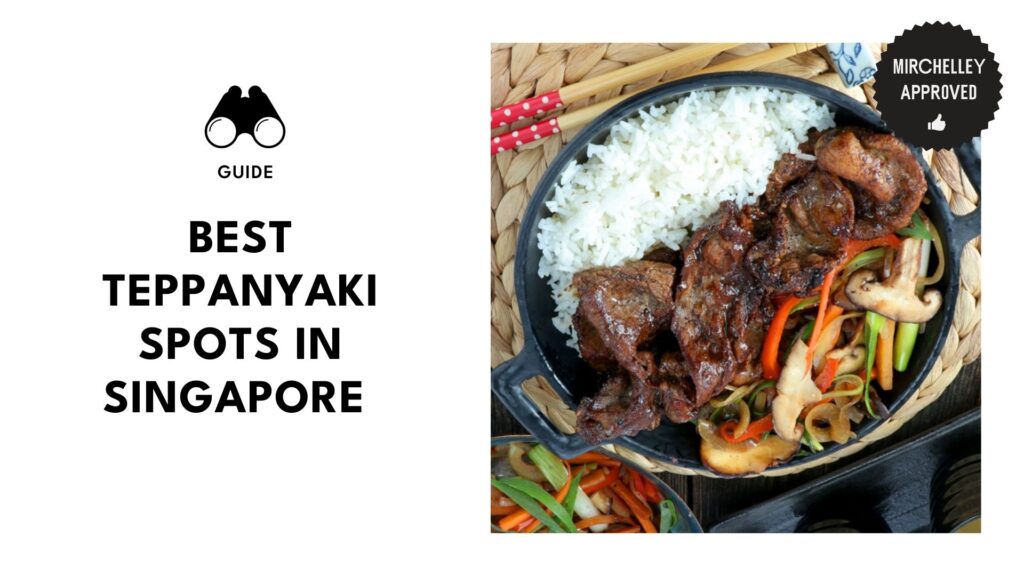Categories > Guides and Tips

Top 11 Chinese New Year Traditions in Singapore That Bring More Luck Than a Fortune Cookie
- Refresh your home with a thorough spring cleaning
- Dress in red to attract happiness
- Honor family ties with meaningful Chinese New Year visits
- Stay up late for good luck
- Send virtual red packets to loved ones
- Attend the Peranakan Lunar New Year Mass
- Catch an exhilarating lion dance performance
- Immerse yourself in the street festivities
- Celebrate at local temples
- Celebrate “everyone’s birthday”
- Wrap up the Chinese New Year with a lantern festival
Growing up in Singapore, Chinese New Year was always a whirlwind of red and gold with the excitement of receiving ang bao.
My family wasn’t particularly traditional, but we never skipped reunion dinner—where the table overflowed with yusheng, hotpot, and stories from relatives we hadn’t seen all year.
Rooted in over 3,000 years of history, Chinese New Year began as a way to mark the start of the lunar calendar, with traditions meant to ward off misfortune and welcome luck.
Today, it remains the most important festival for Chinese communities, symbolizing renewal, family unity, and good fortune. Over time, these traditions have evolved, putting together ancient customs with more modern celebrations.
To help you fully enjoy the season, I’ve put together a list of Chinese New Year practices so you don’t have to miss out!
1. Refresh your home with a thorough spring cleaning
Media credit: @danielhteo
As a kid, I dreaded the Chinese New Year spring cleaning. It meant hours of scrubbing, sorting, and getting rid of things I secretly wanted to keep. My parents, however, took it seriously—dusting every corner and decluttering cabinets.
At the time, it felt like an exhausting chore, but I’ve come to appreciate why it’s such a big deal.
Spring cleaning is actually a symbolic way to sweep away bad luck and welcome good fortune for the new year. According to tradition, any mess left behind carries over old misfortune, while a clean home invites fresh opportunities.
Brooms and cloths are then put away before New Year’s Day to avoid “sweeping away” the luck. Now, even if I still grumble through, I know it’s more than just cleaning—it’s really about a fresh start.
| Pro Tip: When deciding to get rid of unnecessary items, use the “12-month rule,” which means if you haven’t used it in a year, it’s probably time to donate or toss it. |
2. Dress in red to attract happiness
Media credit: @wearing_ins
Every CNY, I make sure to wear something red—a dress, a scarf, or even just a bracelet. It’s a simple tradition that carries deep meaning. Red symbolizes good luck, happiness, and prosperity, so it’s the color of choice for celebrations.
Families decorate their homes in red, and many believe wearing it attracts positive energy for the year ahead. On the other hand, black is often avoided since it represents mourning, misfortune, and bad luck.
Color may seem like a small detail, but in this tradition, it helps set the tone for a bright and hopeful year.
| Pro Tip: To create a rich and festive look for Chinese New Year, pair red with jewel tones like emerald green or sapphire blue. This combination not only honors traditional colors but also brings depth and elegance to your outfit. |
3. Honor family ties with meaningful Chinese New Year visits
Media credit: @jemappellenam
Visiting relatives on the first day of Chinese New Year is a practice I’ve always looked forward to. The day starts early, with families dressed in new clothes, bringing gifts and good wishes to loved ones.
And one of the most important customs that comes along with this is the exchanging of Mandarin oranges, a symbol of prosperity and good fortune.
The exchange isn’t just about giving gifts—it’s a way of sharing blessings. Married couples and elders give red packets filled with money to younger family members, wishing them success and happiness.
| Pro Tip: Avoid giving items considered taboo, such as clocks or sharp objects, as they can symbolize negative connotations. |
4. Stay up late for good luck
Media credit: @peddybeats
Staying up late was one tradition I never complained about. As a kid, it felt like a reward—one night where bedtime didn’t exist.
My family would gather in the living room, watching festive TV specials, snacking on bak kwa, and counting down to midnight. I never thought much of it beyond the fun, but I later learned it had a deeper meaning.
This practice, known as Shou Sui, is believed to bring longevity to one’s parents. In Chinese tradition, staying awake symbolizes protecting loved ones from misfortune and ensuring they live a long, healthy life.
Many families keep this tradition alive, spending the night playing games or watching fireworks. Even now, I make an effort to stay up—not just for superstition, but for the rare, quiet moments of togetherness before the new year officially begins.
| Pro Tip: Drinking too much caffeine too early can backfire, so opt for light snacks like nuts or fruit to keep your energy up. |
5. Send virtual red packets to loved ones
Media credit: @craftwerkzsg
Growing up, receiving ang bao was always one of the best parts of Chinese New Year. Tearing open the crisp red envelopes and counting the money was a small but exciting ritual.
But in recent years, my relatives have started sending e-bao—digital red packets through payment apps. At first, it felt strange tapping a screen instead of receiving a physical envelope, but I’ve come to appreciate the convenience.
With Singapore embracing digital payments, families are shifting to e-bao to reduce paper waste and make gifting easier. Banks and e-wallet platforms now offer festive designs, keeping the tradition alive in a modern way.
Some even allow personalized messages and animations. Alongside this, sustainable practices are gaining traction, with people opting for reusable red packets or donating their e-bao to charity.
If you haven’t tried it yet, this is a tradition worth embracing.
| Pro Tip: Opt for even-numbered amounts, as odd numbers are traditionally associated with funerals. Steer clear of amounts involving the number four, as its pronunciation is similar to the Chinese word for “death.” |
6. Attend the Peranakan Lunar New Year Mass
Media credit: @littleoscialsg
If you’re looking to experience a distinctive cultural and religious event, you should consider attending the Peranakan Lunar New Year Mass at Singapore’s Church of the Holy Family.
This annual Mass, conducted entirely in Baba Malay, reflects the rich heritage of the Peranakan community, descendants of early Chinese settlers who intermarried with local populations.
Parishioners here dress in traditional attire—sarong kebaya for women and baju lok chuan or batik shirts for men—which adds beautiful colors to the congregation.
During all this, you might notice the Tok Semayang, a prayer table adorned with red cloth, candles, and auspicious fruits like pineapples and pomelos, symbolizing prosperity and abundance.
The Mass then concludes with the blessing of Mandarin oranges, emblematic of good fortune, which congregants exchange to extend festive goodwill.
Participating in this Mass provides a profound insight into how the Peranakan community harmoniously integrates their faith with cultural identity.
| Pro Tip: After the Peranakan Lunar New Year Mass, it’s a great idea to mingle with members of the Peranakan community. This is a wonderful opportunity to learn more about their rich cultural heritage and foster a sense of unity and understanding. |
7. Catch an exhilarating lion dance performance
Media credit: @joaodsc
The first time I watched a lion dance up close, I swear I could feel the ground shake with every drumbeat. It was a force of energy, meant to drive away bad luck and welcome prosperity for the new year.
Traditionally performed during Chinese New Year, lion dances bring businesses and homes good fortune, with the lion “eating” and “spitting out” lucky greens and red envelopes.
The loud cymbals and gongs aren’t only for effect—they ward off evil spirits, making way for a fresh start. Each movement has meaning, from playful curiosity to powerful stances that symbolize strength and courage.
This is also one of the most exciting traditions of the new year, filling the streets with movement, colour, and celebration. Watching it live, you can’t help but get caught up in the fun.
| Pro Tip: If you wish to take photos or videos, do so without obstructing others’ views. Avoid using flash, as it can distract the performers. |
8. Immerse yourself in the street festivities
Media credit: @k317h._.70h
CNY in Singapore isn’t complete without the dazzling street festivities, and River Hongbao is one of the biggest events.
Held at Marina Bay, this annual celebration features towering lantern displays, cultural performances, and fireworks that light up the city skyline. Visitors can walk among zodiac lanterns, enjoy live music and dance performances, and sample festive treats.
There’s even a coin-tossing tradition at the wishing well, where people try to land a coin for good luck in the coming year.
Chinatown and Orchard Road also burst into life with decorations, night markets, and lion dance performances.
Chinatown’s festive bazaar is packed with traditional snacks, lucky charms, and decorative items, while Orchard Road features themed displays and pop-up events that add to the celebrations.
Some events even share stories of Chinese myths, bringing legends of the zodiac and prosperity gods to life.
| Pro Tip: Traffic congestion is common during major events. Opt for public transport to avoid delays and parking hassles. Singapore’s MRT and bus systems are efficient and convenient. |
9. Celebrate at local temples
Media credit: @iishreyaing
Spending Chinese New Year at a local temple instead of home brings a different kind of celebration—one that’s quieter but deeply meaningful.
Instead of the usual home-cooked feasts and noisy gatherings, the focus here is on reflection and renewal. People light incense sticks, bow before deities, and offer fruits and flowers as a sign of gratitude.
Some temples host midnight ceremonies, with the first prayers of the year believed to bring extra blessings. Fortune stocks and readings gather a sense of anticipation for the months ahead.
While it’s different from celebrating at home with family, the temple offers a sense of community. This is where strangers come together to welcome the new year with hope, respect, and the belief that better days are ahead.
| Pro Tip: Wear easily removable footwear and follow any posted instructions or observe others to know when it’s appropriate to remove your shoes. |
10. Celebrate “everyone’s birthday”
I never thought much about Renri, the seventh day of CNY, until my family made it a point to celebrate. One year, my aunt announced that since it was considered as “everyone’s birthday,” we should all toast to good health.
We had a simple dinner, shared a yusheng toss, and tossing it high is believed to bring good fortune! It felt like a small, quiet moment in the middle of all the new year festivities.
In Chinese tradition, Renri marks the day humans were created, making it a shared birthday for all. It’s a time to reflect on new beginnings and wish for prosperity in the year ahead.
| Pro Tip: If you’re celebrating solo, take a moment to set personal goals—it’s like a second chance at New Year’s resolutions! |
11. Wrap up the Chinese New Year with a lantern festival
Media credit: @kingflau
Chap Goh Mei—the 15th and final day of Chinese New Year—marks the end of the festivities with lantern displays, family reunions, and wishes for a prosperous year ahead.
Also known as the Lantern Festival, it’s a time to look back and celebrate unity. In Singapore, people visit temples, light lanterns, and enjoy tangyuan (glutinous rice balls), symbolizing togetherness.
But one of the most intriguing traditions is its connection to love and matchmaking.
Traditionally, Chap Goh Mei is considered the Chinese version of Valentine’s Day. In the past, unmarried women would write their names on oranges and throw them into rivers, hoping a potential suitor would pick them up.
While it started as a matchmaking custom in China, Singapore has put a modern spin on it—some people now toss oranges into the Singapore River or participate in matchmaking events.
| Pro Tip: To embrace this tradition in a modern and environmentally friendly way, consider writing your contact details on biodegradable paper attached to the oranges before tossing them into designated areas. |





